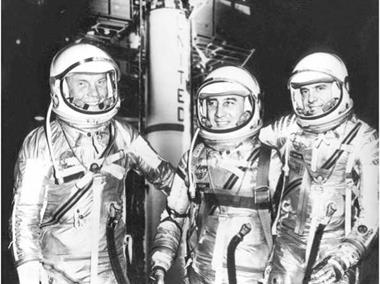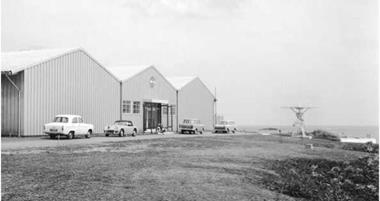FIRST SPACEMAN
Grissom was pleased with the overall success of the MA-2 flight, but his mother was somewhat less thrilled when the news broke that he had been selected as one of three candidates to make America’s first flight into space. “Oh no,” she told reporters. “I’ve been hoping and praying he wouldn’t be the one. I hate to be against him because I know he wants to go.” After a pause, she added, “I’ve thought all along he would be one of them. And I’ll be more than proud if everything turns out alright.”1
For his part, Grissom had been brimful of confidence that he might get the first flight, but that lofty ambition had been abruptly thwarted during a private meeting between the astronauts and their boss, Robert Gilruth, on 19 January during which Gilruth had unceremoniously told the seven astronauts that after much deliberation
Shepard had been chosen to make the first suborbital flight and Grissom the second, with Glenn backing up both flights. They were asked to keep the news to themselves until the time of the actual first mission, a chore that was often difficult. As Grissom stoically told one newsman when asked if he would like to be the one chosen to make the first flight, “Everything I do is influenced by it. With everything I do, I expect it. I am here to ride the capsule.”2
|
The three Mercury candidates for the first suborbital flight: Glenn, Grissom and Shepard. (Photo: NASA) |
|
NASA’s Mercury tracking station on the island of Bermuda. (Photo: NASA) |
Spacecraft No. 11, which would fly the MR-4 mission, was delivered from the McDonnell plant on 7 March. Grissom had viewed the capsule under assembly at the St. Louis plant two months earlier and attended several production meetings there as the months rolled by prior to the capsule being delivered to the Cape. “I thought it would be good for the engineers and workmen who were building my spacecraft to see the pilot who would have to fly it hanging around,” he observed in the astronaut book, We Seven. “It might make them just a little more careful than they already were and a little more eager to get the work done on time if they saw how much I cared.”3
Following NASA’s announcement, speculation on which of the three astronauts would fly the first mission was rife in the press. On 12 March that year, Aviation Week & Space Technology magazine editor Marvin Miles published an article under the title “Marine Stands Out as Astronaut Choice.” The article began by explaining its rather emphatic title, suggesting, “We say this because Glenn, at 39 the eldest of the group, has always been the father of the seven-man team; a leader without appointment; an officer particularly respected among the astronauts – and apparently all others in the Mercury program – for his personality, his dedication, his skill and his experience.” While incorrect in its speculation, the magazine was only echoing the public’s prevailing conjecture on the subject.4












